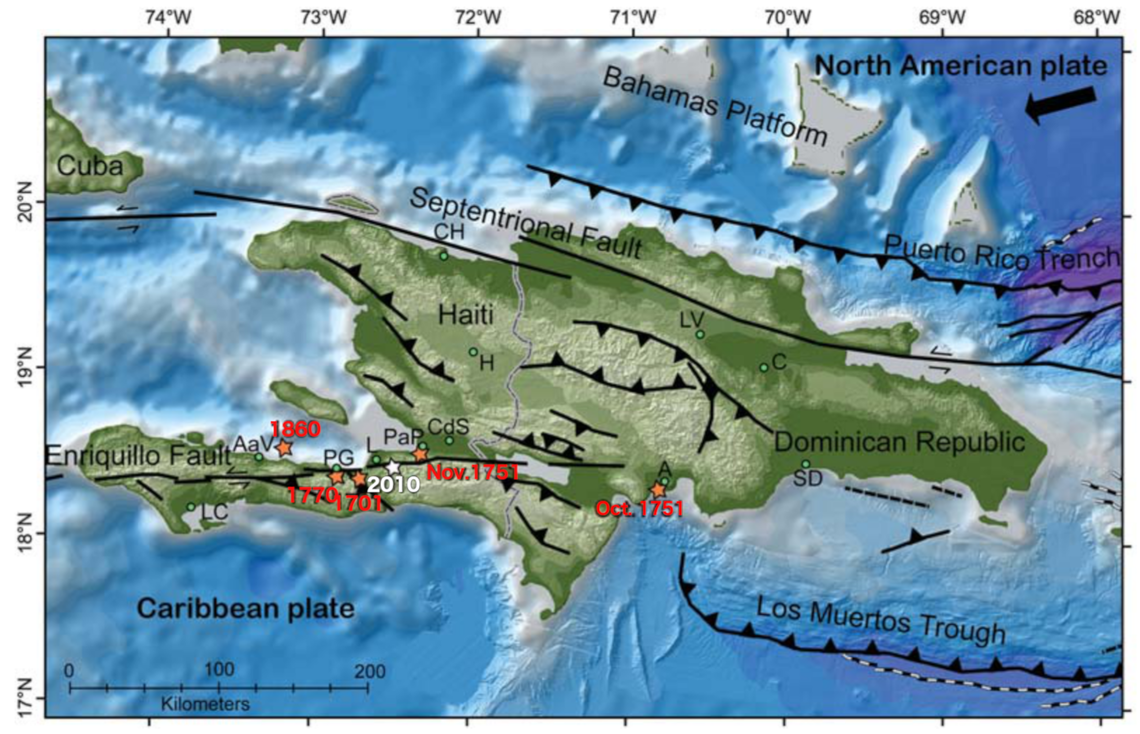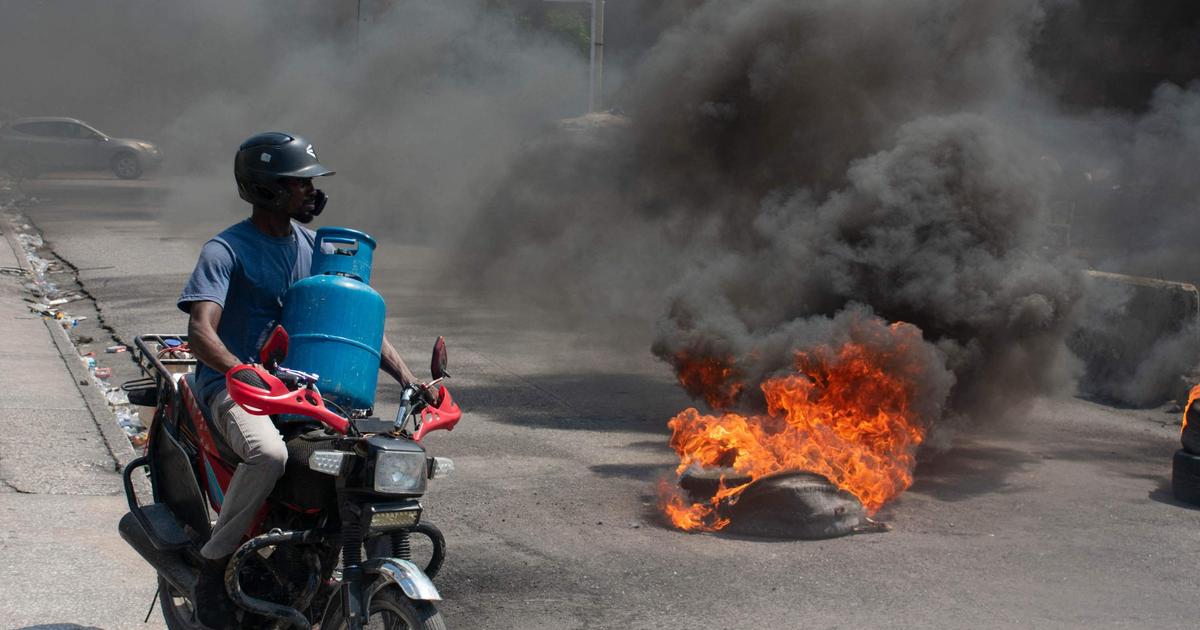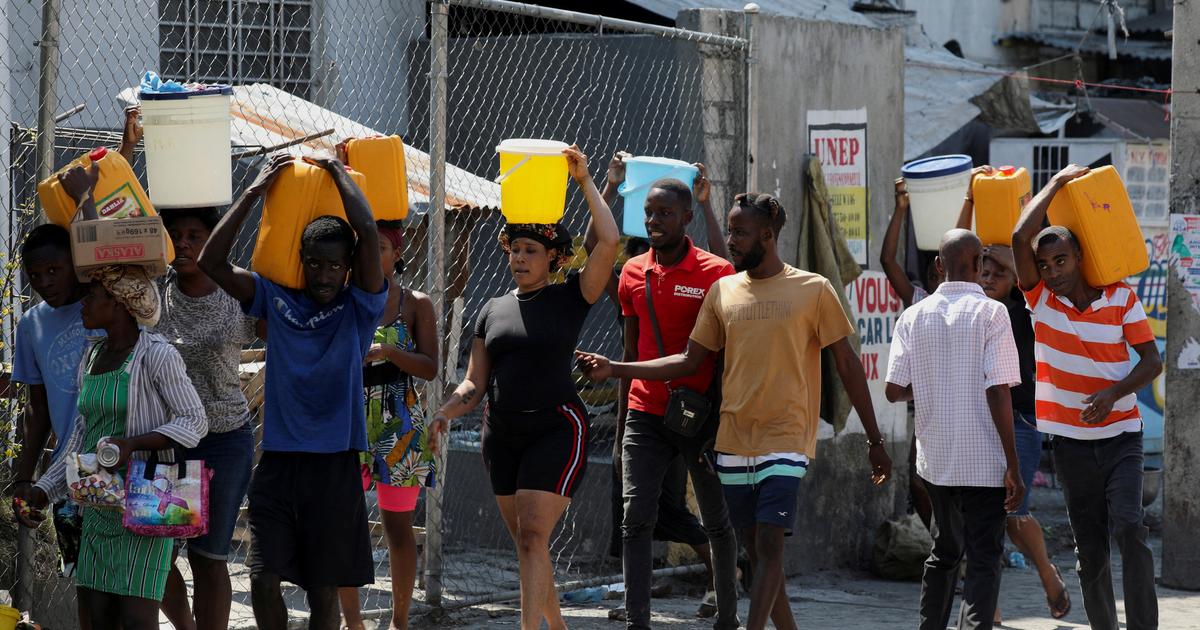Haiti, between tragedy and instability 2:22
(CNN Spanish) -
The earthquake on August 14 in Haiti, which left more than 1,400 dead as of Monday, not only brought to mind the devastating 2010 earthquake (in which around 200,000 people died and whose effects have not yet the country recovers) but forces many to wonder why that country suffers the scourge of the movements of the Earth with such intensity.
The recent earthquake of magnitude 7.2 occurred in the southwestern peninsula of the country (the Tiburon peninsula), about 100 km west of the epicenter of the 7.0 earthquake of 2010, explains the United States Geological Survey (USGS, for its acronym in English).
"Like the 2010 event, the mechanism of this earthquake indicates an oblique thrust fault along the Enriquillo-Plantain Garden fault zone, the main fault structure and the microplate boundary in the region," he says. the USGS.
The Enriquillo fault, which passes through the south of the island of Hispaniola, which includes Haiti and the Dominican Republic, is the key to understanding the tragic fate of Haiti in terms of earthquakes.
The fault begins in Lake Enriquillo, in the southwest of the Dominican Republic, very close to the border with Haiti.
What you should know about Haiti
A fault is a fracture or zone of fractures between two blocks of rock, according to the USGS.
Faults allow blocks to move relative to each other.
This movement can happen quickly, in the form of an earthquake, or it can occur slowly, in the form of a creep.
Haiti's location: between two faults
The 2010 and 2021 earthquakes occurred in the region that separates the Caribbean tectonic plate and the North American plate.
That border zone "is dominated by the left lateral sliding movement and compression, and adapts to a sliding of approximately 20 mm / year, with the Caribbean plate moving east with respect to the North American plate," he explains. the National Office of Oceanic and Atmospheric Administration (NOAA).
Haiti, as it occupies the western part of Hispaniola, is in the middle of the Septentrional Oriente fault, to the north of the island, and the Enriquillo fault, which crosses the Tiburon peninsula, where Les Cayes (the city most affected in the earthquake) is located. recent) and the south-central area of the country, where Port-au-Prince is located, the capital and the center of the devastation in 2010. In that it differs from the eastern part of the island, where the Dominican Republic is located.
advertising
Haiti and the Dominican Republic, two different realities on the same island
USGS
The Enriquillo-Plantain Garden Fault is similar in structure and character to California's San Andrés Fault in that both are sliding in nature, meaning that the plates move side by side in a horizontal direction. CNN Paul Mann when he was a principal investigator at the Institute of Geophysics at the University of Texas at Austin (Mann is currently Professor of Geology at the University of Houston).
The types of terrain and construction are also decisive
Although earthquakes with greater magnitude are registered in other parts of the world, in Haiti the tragedy is greater.
Because the magnitude scale has a logarithmic base, each magnitude increase of a whole number represents a ten-fold increase.
So an earthquake of magnitude 6.5 is 10 times bigger than one of magnitude 5.5.
But just because the magnitude of an earthquake is greater does not always mean that the resulting damage is worse.
The 2010 earthquake in Haiti left more than 200,000 dead and damages estimated at between US $ 7,800 and US $ 8,500 million.
By comparison, in 2019, a 7.1 magnitude earthquake struck near Ridgecrest, California.
As a result of that stronger earthquake, only one person lost his life, with an estimated US $ 5 billion in damages.
Haiti: How does the 2021 earthquake differ from the 2010 earthquake?
In addition to the similar magnitude, the depths were also similar.
The 2010 Haiti earthquake was 13 km deep and the California one 8 km deep.
While that doesn't seem shallow, it is in terms of earthquakes.
Geologically speaking, any earthquake that is less than 70 km deep is considered shallow.
The shallower an earthquake is, the more damage is likely to occur as it is closer to the surface.
The explanation for the disparity between deaths and damage from two earthquakes with similar magnitudes and depths also has a lot to do with the terrain and how buildings are constructed, explains CNN meteorologist Allison Chinchar.
Earthquakes emit high and low frequencies.
If the ground vibrates slowly, it is low frequency.
If the ground vibrates rapidly, it is more of a high frequency.
Low frequencies mainly affect multi-story buildings.
In fact, the lower the frequency, the larger the buildings that will be affected.
While high frequencies tend to affect small buildings, Chinchar says.
Frequency was just one of the factors why the earthquakes in Haiti have been so devastating.
In Haiti and other island nations, there are rocks that rise above the surface, on which houses are built, to much softer areas that can amplify seismic waves.
Haiti also has a topographical aspect.
particular.
Port-au-Prince is mainly at sea level, with sandy sediments in those low-lying areas.
But just 10 to 15 miles away, the elevation rises several thousand meters toward more mountainous terrain with harder rocks on the surface, Chinchar says.
The shaking is amplified by lowland sandy sediments in Port-au-Prince and Les Cayes, but also in some of Haiti's hills and mountain ranges due to a topographical effect.
But it is also necessary to build structures depending on the soil or rock on which it is built, says Chinchar.
It is often mentioned that buildings in Haiti are not built to the same standards as buildings in California, New Zealand, or Chile (all on the Pacific Ring of Fire), where earthquakes are common. But that doesn't explain the whole picture. As Haiti is frequently affected by storms or even hurricanes (at the moment Haiti is under threat from Tropical Depression Grace), construction is more prepared for the ravages of time than for the movements of the earth, explains geophysics to CNN. from the USGS Susan Hough.
Hough points out that in Haiti they have a style of construction where they put very heavy roofs for hurricanes, so the roof doesn't come off.
But when an earthquake strikes, the very heavy concrete roof shifts and compromises "the underlying structure," which probably already had some element of vulnerability.
In addition to the 2010 earthquake, in 2016 Hurricane Matthew hit the country hard, approximately two million people were affected.
Economic and infrastructure capacity come into play.
"Two-fifths of all Haitians depend on the agricultural sector, mainly small-scale subsistence farming, which remains vulnerable to damage from frequent natural disasters," the CIA says in its Factbook.
It is the poorest country in the Western Hemisphere, with about 60% of the population living below the national poverty line, according to the CIA.
Added to these conditions is political instability.
In July, President Jovenel Moïse was assassinated during an attack on his private residence.
Meanwhile, the Dominican Republic - also frequently affected by hurricanes - has been "one of the fastest growing economies in Latin America for the past two decades," according to the CIA.
The Dominican Republic is also in danger
USGS investigators have alerted to activity in the Enriquillo – Plantain Garden fault zone in Jamaica, Haiti and the Dominican Republic.
"The 2010 Haiti earthquake may usher in a new cycle of major earthquakes in the Enriquillo fault system after 240 years of seismic inactivity. The entire Enriquillo fault system appears to be seismically active; Haiti and the Dominican Republic they must prepare for future devastating earthquakes, "the USGS warned after the 2010 quake.
With information from Brandon Griggs, Judson Jones and Taylor Ward
Earthquake















